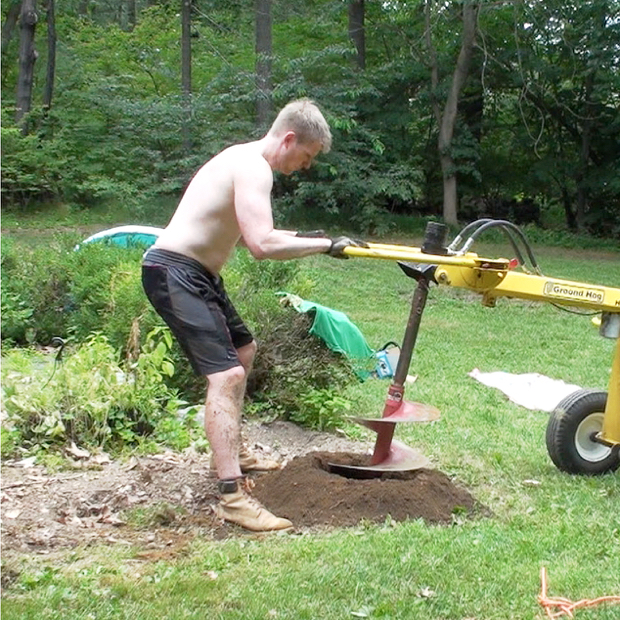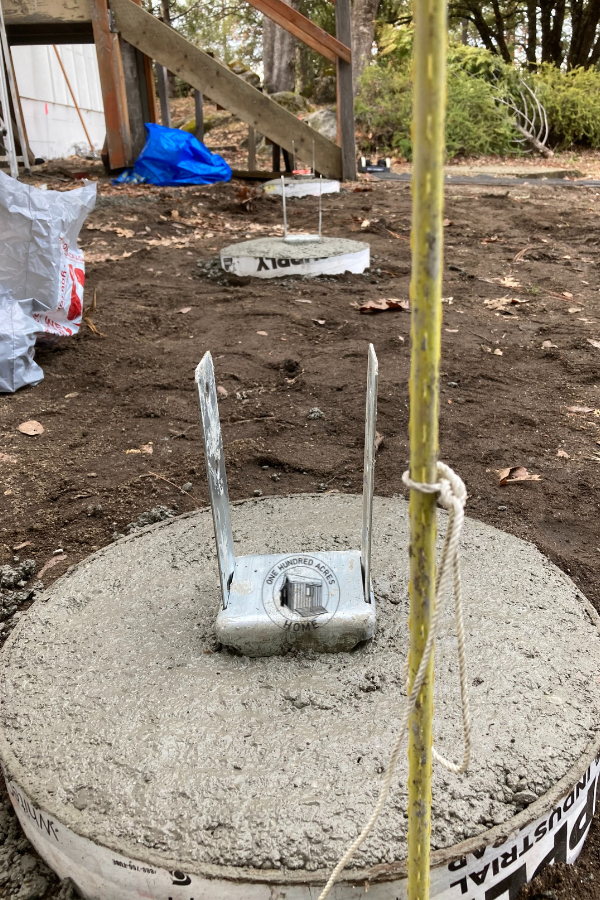Selecting the Right Deck Footings for Stability and Longevity
The durability and safety and security of your deck depend heavily on the type of footings you pick, as they supply the crucial assistance and security to withstand the test of time. In this discussion, we will explore the numerous kinds of deck grounds, think about the important variables to consider when making a decision, and dig right into the pros and disadvantages of various choices.
Sorts Of Deck Grounds
There are several sorts of deck grounds that can be utilized, each offering unique advantages and factors to consider. One usual kind of footing is the concrete pier footing. These grounds are composed of a round hole loaded with concrete, which supplies a strong structure for the deck messages. Concrete pier footings are fairly easy to set up and provide excellent stability, making them a popular choice for numerous deck tasks.
One more type of footing is the helical pile ground. Helical piles are steel shafts with helical plates affixed to them. These footings are mounted by screwing them into the ground, which develops a protected structure for the deck. Helical stack footings are optimal for areas with difficult soil conditions, as they can be set up in virtually any type of kind of dirt. They additionally enable very easy modification and progressing of the deck if needed.
Additionally, some home builders select precast concrete footings. These grounds are made of durable concrete and be available in numerous sizes and shapes to fit different deck layouts. Precast concrete grounds are convenient to install and give a secure base for the deck structure.
Lastly, one more choice is the post-in-anchor footing system. This kind of footing entails driving a steel anchor into the ground and connecting it to the deck article. It offers adaptability in terms of positioning the deck blog posts and is appropriate for decks with light-weight frameworks.
When choosing the appropriate sort of deck footing, it is important to think about factors such as dirt conditions, deck load, and regional building regulations (Deck Footings). Consulting with an expert service provider or structural designer can assist make sure the appropriate ground is selected for a stable and risk-free deck
Aspects to Consider When Selecting Grounds
When picking the ideal footings for a deck, it is important to carefully think about various variables such as dirt conditions, deck load, and adherence to neighborhood building regulations. These variables play a considerable duty in making certain the stability and toughness of the deck framework.
Among the main factors to consider is the dirt problems. The sort of dirt on which the deck will be constructed figures out the sort of grounds required. Decks developed on sandy or loose soils might need deeper grounds to provide ample assistance and protect against settling. On the other hand, decks improved clay or expansive dirts might require grounds that can suit the dirt's propensity to expand and contract.
An additional essential aspect is the deck tons. The weight of the deck, consisting of the products made use of and any kind of prospective live lots such as furniture or celebrations, must be taken into consideration when selecting grounds. The footings have to be created to bear the weight of the deck and disperse it equally to avoid any kind of architectural concerns or failings.
Finally, adherence to local building regulations is paramount. Building regulations differ from region to area, and it is important to comply with the particular requirements established by the neighborhood authorities. Deck Footings. These codes make sure that the deck is developed safely and fulfills the required criteria for structural stability and load-bearing capability
Concrete Grounds: Cons and pros

When used as the structure for a deck,Concrete grounds use numerous benefits and disadvantages. On the silver lining, concrete grounds give excellent security and resilience. Concrete is a solid and rigid product that can sustain hefty loads and stand up to various climate condition. It likewise has a lengthy lifespan, making it a reliable choice for lasting usage.
One more benefit of concrete grounds is their versatility. They can be poured right into various sizes and shapes to accommodate different deck designs and setups. Concrete grounds can be tailored to fit the details needs and needs of the deck framework.
However, there are likewise some downsides to using concrete grounds. This can boost the general cost of the deck task and might call for professional aid.

Helical Piers Vs. Sonotubes: Which Is Much better?
In taking into consideration the structure choices for a deck, the comparison in between helical piers and sonotubes is essential in figuring out the exceptional option. They are turned into the ground making use of hydraulic equipment, providing a steady and durable structure for the website link deck.
The helical plates on the piers develop a solid hold with the dirt, protecting against any type of activity or changing of the deck. Sonotubes, on the various other hand, rely exclusively on the concrete filling for security, which may not use the very same degree of stamina and resistance.
In regards to installation, helical piers are reasonably simpler and faster to mount compared to sonotubes. The hydraulic equipment made use of to twist the piers into the ground ensures a fast and efficient procedure. Sonotubes, on the other hand, call for digging holes and pouring concrete, which can be lengthy and labor-intensive.
Furthermore, helical piers are a more versatile alternative. They can be utilized in various dirt problems and can be readjusted or strengthened if needed. Sonotubes, on the various other hand, may require added support, such as rebar, in certain soil conditions or locations with high tons requirements.
Picking the Right Footings for Your Deck's Dimensions
For optimum architectural honesty, it is vital to meticulously select the suitable grounds that align with the measurements of your deck. The measurements of your deck, including its size, elevation, and size, play a substantial role in identifying the kind and size of grounds needed.
When choosing grounds for your deck, it is necessary to consider the load-bearing capability of the dirt. The weight of the deck, integrated with the weight of any type of furnishings or people on it, exerts a substantial pressure on the footings (Deck Footings). Consequently, it is essential to select grounds that can Learn More Here adequately support this weight without sinking additional resources or moving in time.
Bigger decks with greater measurements call for larger footings to provide adequate security and assistance. The form of the footings, whether they are round or square, depends on the style and format of the deck.
Verdict
In verdict, picking the right deck footings is crucial for guaranteeing security and resilience. Aspects such as the kind of grounds, the deck's measurements, and the pros and disadvantages of various alternatives must be considered.
These footings are composed of a round hole loaded with concrete, which supplies a strong foundation for the deck messages. Concrete pier grounds are reasonably simple to set up and provide outstanding security, making them a popular choice for several deck projects.
Precast concrete grounds are practical to mount and give a steady base for the deck structure.
It uses adaptability in terms of positioning the deck blog posts and is ideal for decks with light-weight frameworks.
Concrete footings offer several advantages and negative aspects when made use of as the structure for a deck.